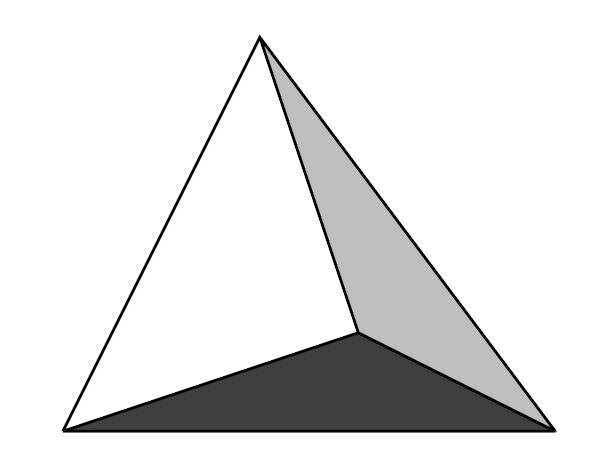Optimaximization
The maximized volume of a tetrahedron subject to the constraint that it has four edges whose lengths sum to 1 is represented by the expression
where and are coprime positive integers, find .

The answer is 8.
This section requires Javascript.
You are seeing this because something didn't load right. We suggest you, (a) try
refreshing the page, (b) enabling javascript if it is disabled on your browser and,
finally, (c)
loading the
non-javascript version of this page
. We're sorry about the hassle.
Let's consider a case when three of "our edges whose lengths sum to 1" belong to one face. To maximize the volume we need maximum area for a given perimeter and maximum height of the tetrahedron. That will be achieved with the base being an equilateral triangle because it has a maximum ratio of area to perimeter, and the fourth edge with the required restriction to be perpendicular to the base. Let x denote the length of the base edge, then the volume will be: V = 4 3 x 2 × ( 1 − 3 x ) × 3 1 After differentiating the above function we find the local maximum to be at x = 2 / 9 which gives volume V = 3 5 3 1 ⇒ A + B = 8
Comment: As Mark Hennings correctly points out in the comment below, there is another configuration when no three edges with the given restriction belong on one face.